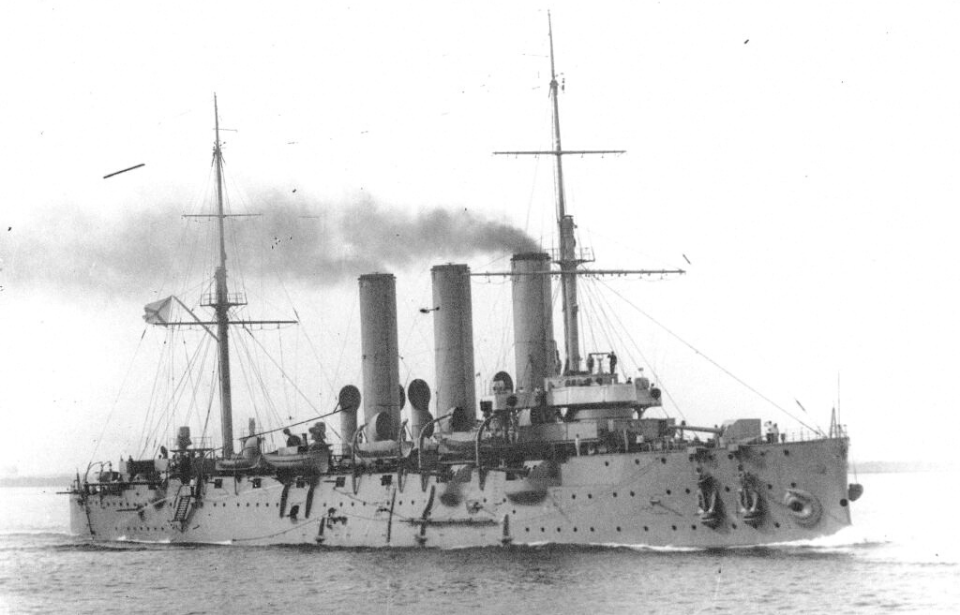The October Revolution was one of the key events of the larger Russian Revolution, and the Russian cruiser Aurora signaled its start. Constructed at the end of the 1800s, Aurora remains in service with the Russian Navy, albeit for ceremonial purposes. Some considered the vessel obsolete when introduced, but she managed to serve a remarkable career.
Cruiser Aurora
Aurora’s hull was laid down on May 23, 1897 at the Admiralty Shipyard in Saint Petersburg. She was one of three Pallada-class cruisers built by the Russians, and was ordered for service in the Pacific. She was named after a Roman goddess on personal orders from Tsar Nicholas II – ironically, the ship would later be instrumental in bringing down the monarchy.
As a Pallada-class cruiser, Aurora was built to be fast, so she could engage in commerce raiding operations. She displaced 6,731 tons and measured 126.8 meters in length. The vessel carried eight 152MM guns, 24 75MM guns, eight 37MM guns and three torpedo tubes, two of which were underwater.
She was later equipped with more 152MM firepower, bringing the total to 14, as well as four 76.2MM AA guns and one QF 2-pounder naval gun.
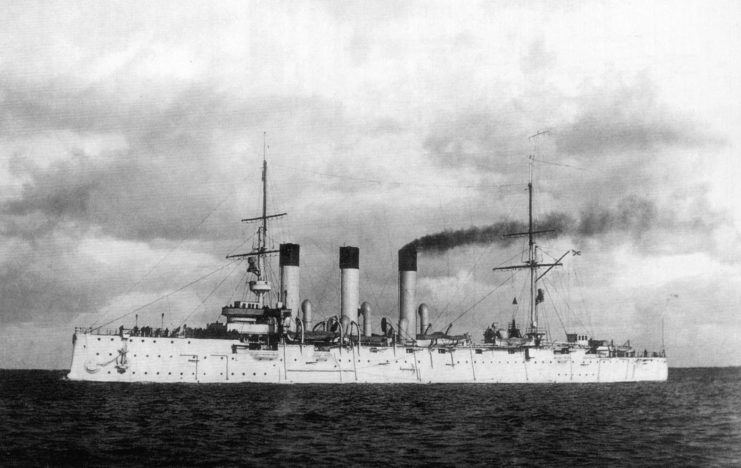
Initially, Russia considered ordering foreign designs, but eventually settled on building the Pallada-class. At the time, naval technology was rapidly evolving – with the HMS Dreadnought less than a decade away – but the Pallada-class of cruisers experienced lengthy construction periods. As a result, the ships were considered obsolete before they even entered service.
Early service
After entering service, Aurora was sent to the Russian Pacific Fleet, but was struck by mechanical issues before arrival. After a refit, the vessel once again set off on her journey. On the way, the group of Russian vessels ran into British fishing trawlers and, thinking they were Japanese torpedo boats, opened fire. In the confusion, the Russian ships fired on each other. Aurora was hit by friendly fire and two crew members were killed, including the vessel’s chaplain.
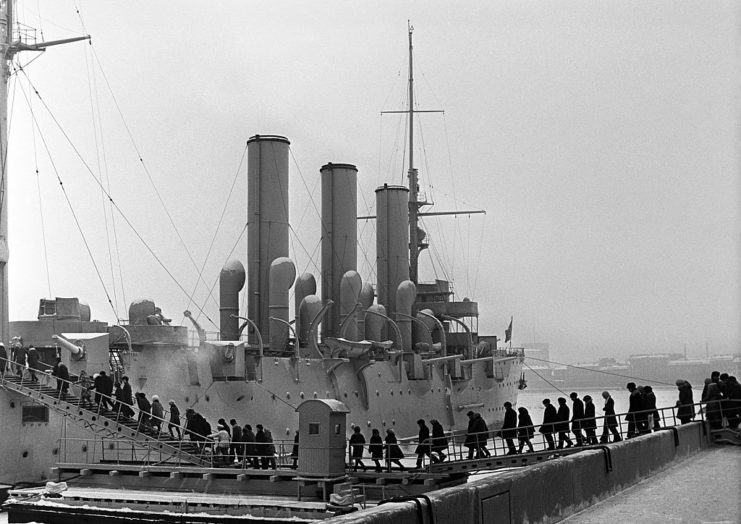
Once she made it to the Far East, Aurora was involved in the Battle of Tsushima, a naval battle fought between Russia and Japan during the Russo-Japanese War. It is one of the largest naval battles in history and the only major battle where modern battleships were decisive. It’s regarded today as the final hurrah of traditional naval battles.
In the battle, Aurora lost 14 crew members and her captain, Eugene R. Yegoryev, and the overall encounter resulted in a Japanese victory. Aurora covered slower Russian vessels and eventually retreated to Manila, where she was held by the US for the remainder of the war. Once released, she sailed back to the Baltic to serve as a cadet training ship.
She also traveled the world, visiting various different ports.
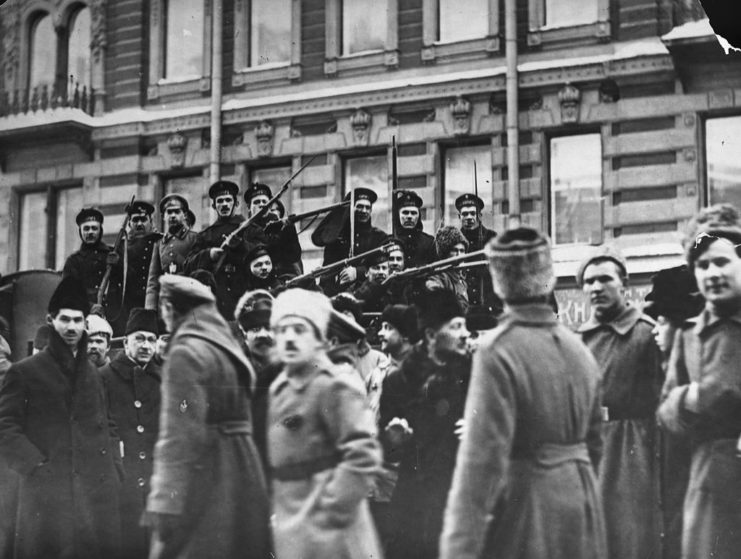
By the time World War I came around, Aurora was outmatched by more modern vessels, yet still participated in shore bombardments, surviving a few run-ins with enemy ships. In 1915, she received six extra 152MM guns, and a year later was sent to Saint Petersburg, where she was due a major refit.
Russian Revolution
At this time, Russia’s bloody and costly involvement in WWI had become a source of anger and resentment toward the country’s leaders, and it was on the edge of a revolution. While Aurora was in Saint Petersburg, some of her crew participated in the 1917 February Revolution. The ship’s captain attempted to stop the revolt, but was subsequently killed.
The cruiser then became a key location for the revolutionaries, who used her as a base to plan and launch revolutionary activities. The majority of her crew joined the Bolsheviks and prepared for the Communist revolution.
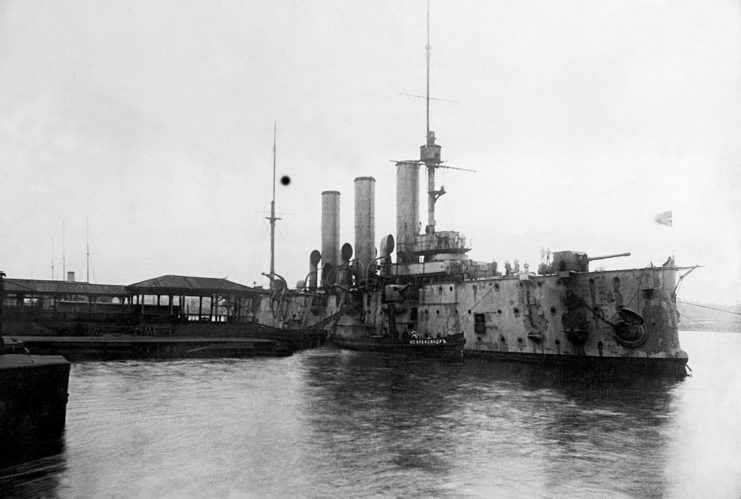
At 9:40 PM on October 24, 1917, Aurora’s most significant moment took place: a blank shot from her forecastle gun signaled the attack on the Winter Palace and the beginning of the October Revolution.
She resumed her role as a training ship following the revolution, visiting a number of ports around the Baltic throughout the 1920s. In 1927, she was awarded the Order of the Red Banner for her revolutionary merits.
World War II to today
During World War II, Aurora was docked in Leningrad and had her guns removed to help defend the city. She was sunk in her harbor in September 1941 after repeated shelling and bombing, but was later raised and repaired, becoming a training vessel for the Nakhimov Naval School.
After the war, she was repaired and permanently anchored at Saint Petersburg, where she became a symbol of the October Revolution.
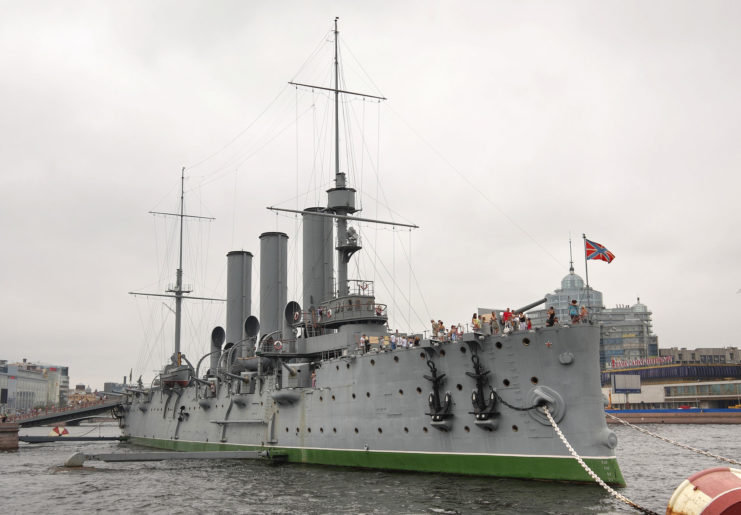
She was awarded the Order of the October Revolution in 1968, and shortly after underwent an extensive restoration, which revealed that much of her armor plating was made in Britain. The restoration saw her lower hull removed and replaced.
Want to become a trivia master? Sign up for our War History Fact of the Day newsletter!
Today, Aurora is still technically in service with the Russian Navy and is the service’s oldest commissioned ship.
